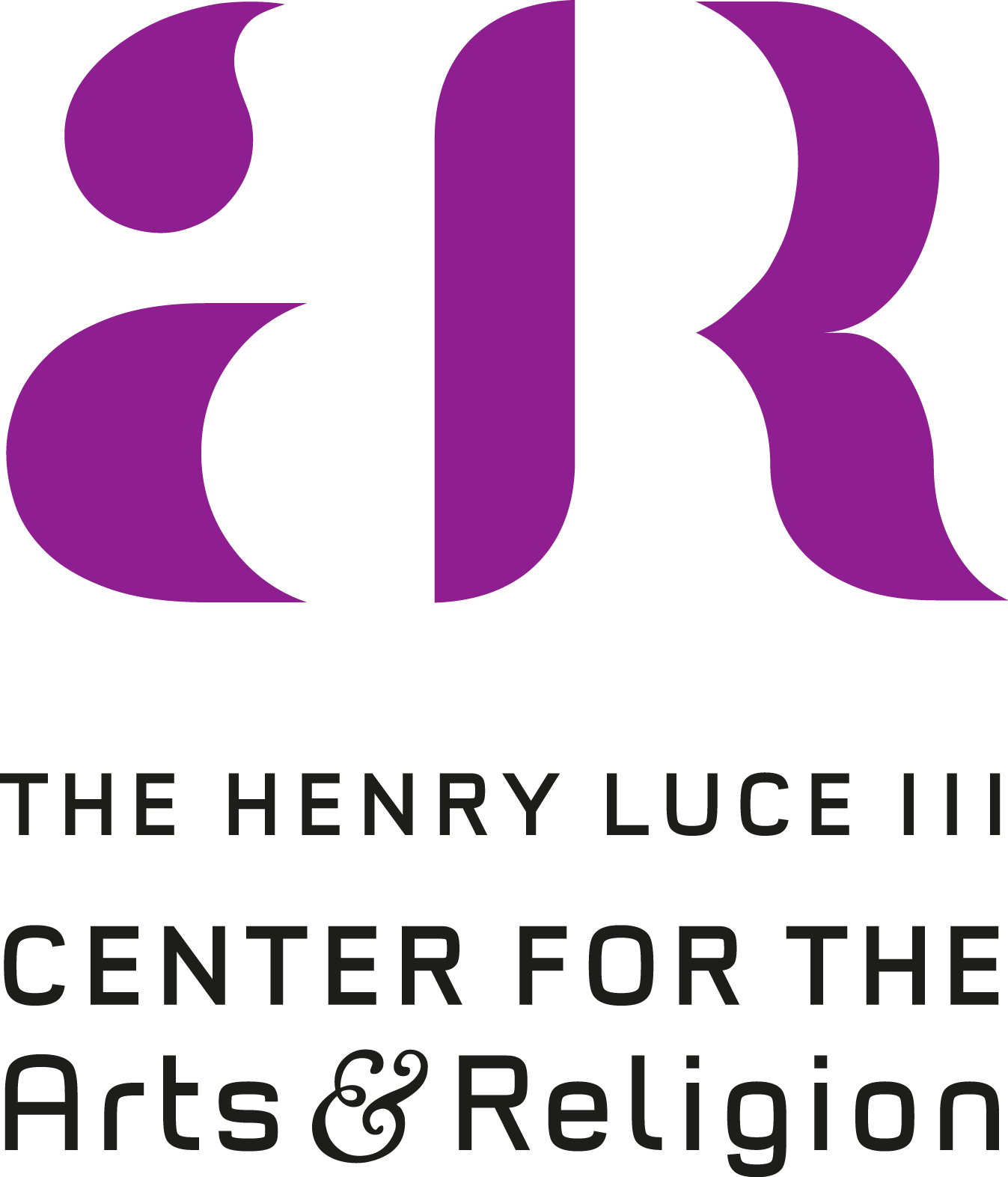Diane von Arx
Windhover, 2002
19 x 19”
Gouache, ink, gold leaf
In “The Windhover,” by nineteenth-century English Jesuit Gerard Manley Hopkins, the poet meditates on the experience of glimpsing Christ in the violent grace of a kestrel (or “windhover”) in flight—literally, hovering in the wind. This Petrarchan sonnet is considered a masterpiece of aural mimesis, with the first eight lines dedicated to a description of the bird’s flight in which rhythm, rhyme, and assonance combine to perfectly capture the movement of the kestrel itself. Between the eighth and ninth line, the poet utilizes a volta, or rhetorical shift, to register a contemplative move from the sensuous beauty of a falcon to the spiritual beauty of Christ. Viewers should take a moment to read or listen to this poem aloud, slowly, “with the ear” as Hopkins might say; it is truly one-of-a-kind.
As Devon Abts’s companion essay on Hopkins explains more fully, his use of poetic form and vivid imagery supplies many possibilities for the calligrapher. Here, von Arx translates the auditory forms of Hopkins’s writing into visual art. One of the artists behind The Saint John’s Bible, her career has also included highly precise graphic design work for advertising and branding. This work was created as a gift for a clergy friend on the occasion of his retirement. When asked which text he wanted scribed and illuminated, the friend chose Hopkins’s poem.
From the title of the poem to its ending, von Arx evokes the bird’s flight, its upward soars and downward dives, through the use of dramatic flourishes above and below letters. The “W” of “Windhover,” rather than the staid linear “W” typed here, dips down and zooms up in dramatic curves. She crowns the “h” with a similar curve. Throughout the whole poem, she uses the descending part of “g” several times to create the same kind of flourish in flight. Here von Arx takes full advantage of her preferred script, Italic, which admits a wide range of variation. Italics are always written with sloped vertical lines, conveying a greater sense of forward motion (and flight!) than other scripts. She describes the letters here as “windy.” We would also add: they are vital.
Further, she employs Italic variations in concert with Hopkins’s poetic alliteration. In the second line, each “d” of “dom of daylight’s dauphin, dapple-dawn-drawn Falcon, in his riding” differs. The exact same “d” would convey monotomy. But by varying the same letter, so that each is visually distinct yet bears a family resemblance to the others, the scribe captures the harmony-within-diversity found both in good lettering and in the natural world at which Hopkins marvels.
One letter seems to stand out visually: the “o”. These are much wider than usual for an Italic script, and are punctuated with a gilded dot in the middle. A poet, however, knows that a good rhythm requires variation. The repeated wide “o” of this piece creates a kind of pause, a kind of calligraphic equivalent of a poet’s stressed syllable—though these letters do not correspond to the stressed syllables in Hopkins’s oral poem. Finally, the wide “o” also echoes the airy flourishes throughout the rest of the poem.
Intriguingly, von Arx describes calligraphy as a “performance art”—and in this piece, we might suspect that this insight allows her to perceive and translate certain performative qualities of Hopkins’s poem into a visual format. In this no-less-graceful calligraphic rendering of the poem, von Arx skillfully reproduces the words of Hopkins’s poem in an elegant italic script, using decorative flourishes to evoke the imagery of Hopkins’s poem. Balancing tradition and innovation, the calligrapher gives expressive visual form to the poet’s aural art.
—Abts/Homrighausen
Further Reading:
Interview with Von Arx about her work on The Saint John’s Bible
Calderhead, Christopher. Illuminating the Word: The Making of The Saint John’s Bible. 2nd ed. Collegeville, MN: Liturgical Press, 2015.
Read more:
Poetic Form and Calligraphic Form
Devon Abts




